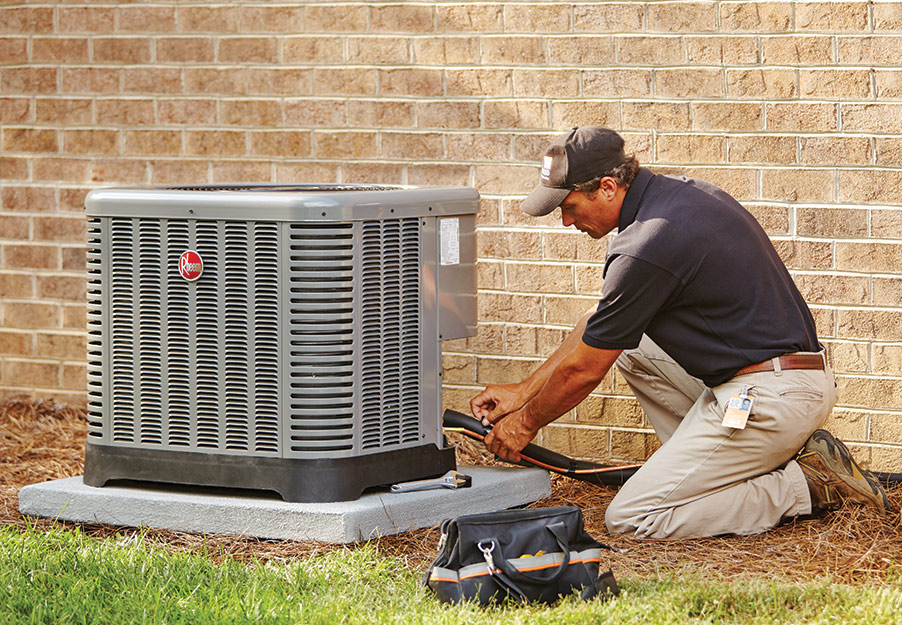As the temperatures rise, the allure of cool, conditioned air becomes irresistible. Central air conditioning is not just a luxury anymore; it’s a necessity for many households seeking relief from sweltering summers. However, before diving headfirst into the realm of central air installation, it’s crucial to understand the costs involved. As an experienced HVAC technician, I’m here to demystify the process and provide you with a detailed breakdown of expenses.
The Benefits of Installing Central Air Conditioning
Before delving into costs, let’s highlight the benefits of central air conditioning. Firstly, it offers unparalleled comfort by evenly distributing cool air throughout your home, eliminating hot spots and creating a consistent temperature. Secondly, central air improves indoor air quality by filtering out dust, pollen, and other airborne particles, which is especially beneficial for individuals with allergies or respiratory issues. Moreover, it enhances the resale value of your home, as modern buyers often prioritize properties with central air. Lastly, central air conditioning increases energy efficiency, leading to potential savings on utility bills in the long run.
Factors Influencing Cost To Install Central Air
Now, let’s explore the factors that influence the cost of central air installation:
-
- Size of the Home: The square footage of your home plays a significant role in determining the size and capacity of the central air unit required. Larger homes necessitate more powerful and expensive units to adequately cool the space.
- Type of Unit: Central air conditioning systems come in various types, including split systems, packaged systems, and ductless mini-split systems. Each type has its own set of advantages and costs, with split systems being the most common and affordable option.
- Ductwork: If your home already has existing ductwork in place, installation costs may be lower. However, if ductwork needs to be installed or repaired, this can significantly increase the overall expense.
- Thermostat: While often overlooked, the thermostat is a crucial component of your central air system. Upgrading to a programmable or smart thermostat may incur additional costs but can lead to greater energy savings and convenience in the long term.
- Labor Costs: Installation labor costs vary depending on factors such as the complexity of the installation, local labor rates, and any additional services required, such as electrical work or permits.
Average Breakdown / Cost Of Installing Central Air
On average, the cost to install central air conditioning in a typical home ranges from $3,000 to $7,000. However, this figure can vary widely based on the factors mentioned above. Here’s a breakdown of average costs:
-
- Unit Cost: The cost of the central air unit itself typically ranges from $1,500 to $4,000, depending on the brand, size, and efficiency rating.
- Ductwork: If ductwork needs to be installed or repaired, this can add anywhere from $1,000 to $5,000 to the total cost, depending on the extent of the work required.
- Thermostat: Upgrading to a programmable or smart thermostat can cost between $150 and $300, including installation.
- Labor Costs: Installation labor costs vary but generally range from $1,500 to $3,000, depending on the complexity of the installation and local labor rates.
Conclusion
Central air conditioning offers unparalleled comfort, improved indoor air quality, and energy efficiency benefits for homeowners. While the initial cost of installation may seem daunting, the long-term advantages far outweigh the expenses. By understanding the factors influencing cost and seeking reputable HVAC services, you can make informed decisions to ensure optimal comfort and savings for years to come.
If you’re considering central air installation for your home and you live in the Greater Pittsburgh area, look no further than PGX Heating and Cooling. Our team of experienced technicians is committed to providing top-quality installation services at competitive prices. Contact us today for a free estimate and take the first step toward enjoying cool, comfortable air all summer long.

